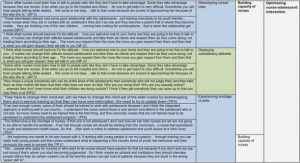Get Complete Project Material File(s) Now! »
Vague Language: An Overview
Danell (1978:04) quotes W. P. Alston’s (1964) traditional definition of vagueness thus: A term is said to be vague if there are cases in which there is no definite answer as to whether the term applies. According to Channell (1994: 07) Peirce (1902), who is considered the originator of the notion of vagueness in language, defines the notion thus:
A proposition is vague where there are possible states of things concerning which it is intrinsically uncertain whether, had they been contemplated by the speaker, he would have regarded them as excluded or allowed by the proposition (Channell 1994: 07).
The above definitions of vague language seem to be closely linked to ambiguity. In fact, some researchers have argued that many instances of vagueness are really instances of ambiguity. However, the notion of vagueness can be distinguished from ambiguity, although in both cases hearers do not know exactly what they should understand.
Ambiguity has been defined as an utterance which has two or more competing but distinct meanings attached to it. Vagueness, on the other hand, is seen as an utterance in which distinct meanings cannot be identified. Weinreich (1966:41) adds to the distinction,suggesting that if a word can be understood as ambiguous in a neutral context, it has two dictionary entries. If it cannot be understood as ambiguous in a neutral context, but different meanings seem possible, it is vague. In terms of these distinctions between vagueness and ambiguity, it seems that ambiguity is a less complex notion than vagueness.
Deese (1974:72) argues with respect to vagueness that correspondence between the ideas possessed by two individuals who are in communication on a common topic is rather poor, but that this is not noticed except in a situation where one is giving directions. In such a situation, he concludes, “we are suddenly made aware of the discrepancy that exists about the same idea in the minds of two different people” (Ibid).
Owing to such discrepancies, some linguists and philosophers are of the opinion that clarity and the avoidance of vagueness and equivocation are desirable, regardless of the context. Furthermore, it is commonly believed that ‘good’ language usage involves, among other features, clarity and precision, and therefore vagueness, ambiguity, imprecision and ‘general wooliness’ (Channell 1994:01) are to be avoided. Channell rejects this opinion because according to her, this view is rather simple and misleading.
She argues that a degree of vagueness, which serves a purpose, is acceptable. She adds that the important notion is that vague language should be used appropriately (Channell 1994:03). She points out that speakers and writers tailor their language to make it suitable to the situation and the linguistic context, and that one way in which speakers and writers do this, is by varying their precision and vagueness. The study seeks to establish whether indeed speakers do so.
To be able to determine the use of vague expressions (e.g. frequency, functions, etc.) in communication, vague items should be identified and categorised. Using Channell’s (1994: 09, 18) terminology, the following vague terms and expressions are identified.
• Vague additives (e.g. around, about, etc.) Although about and around are used interchangeably, about is apparently used more often in spoken language whereas around occurs mostly in the written mode.
• Vague by choice of words or as Channell (1994: 18) puts it ‘unabashedly vague’ (e.g. Whats it? thingummy, thingy, thing etc.) These are empty words used to denote va gueness.
• Expressions that introduce fuzziness (e.g. He has a somewhat low self-esteem; something like that, or something, somewhere, probably, in a way, approximately, maybe, and so on. For example, His weight is approximately 3.2 kg. Approximately is usually used in official and semi-official situations.
• Partial specifiers (e.g. at least, at most, less than etc.).
• Collective nouns (e.g. oodles, heaps of, a touch of).
• Number approximations (a class of thirty odd; they were about / around thirty; they were getting on for forty; five or six; six or so).
• Prefixes and suffixes (e.g. The mountain is rather table-like).
• Hedges (sort of, kind of, etc).
The categories listed above were considered in collecting data for the current study. However, words that fall within other categories such as shields (e.g. I think, It appeared, I believe, etc.), and vagueness by implicature or suppression of reference were not considered. Both categories do not fit into the vagueness defined in the present study.
Shields designate the speaker’s degree of commitment to the truth. In other words, the speaker is unsure of the truth of the proposition. Vagueness by implicature is actually vagueness by omission, which suggests that the vagueness has been removed. For example when someone says ‘Sam is two meters tall’, when Sam is actually 2.2 meters.
Both categories are in contrast to the idea of vagueness discussed in this study. The vagueness referred to by the researcher indicates fuzziness within the proposition being expressed.
1 Introduction
1.1 Background
1.2 Research aims
1.3 Delimitation
1.4 Significance of study
1.5 Methodology
1.6 Population
1.7 Program of study
2 Literature Review
2.1 Introduction
2.2 Language and gender
2.3 Vague language overview
2.4 Functions of vague language use
2.5 Context and community of practice
2.6 Conclusion
3 Research Methodology
3.1 Data collection
3.2 Content analysis
4 Data presentation, analysis and discussion
4.1 Presentation and discussion of recorded and observational data
4.2 Categories of vague expressions
4.3 Summary
4.4 Data presentation and discussion of questionnaire
4.5 Summary of questionnaire data
4.6 Discussion
5 Conclusion
5.1 Summary
5.2 Suggestions for further studies
References
Appendix A
GET THE COMPLETE PROJECT
GENDER ASPECTS OF VAGUE LANGUAGE USE: FORMAL AND INFORMAL CONTEXTS




